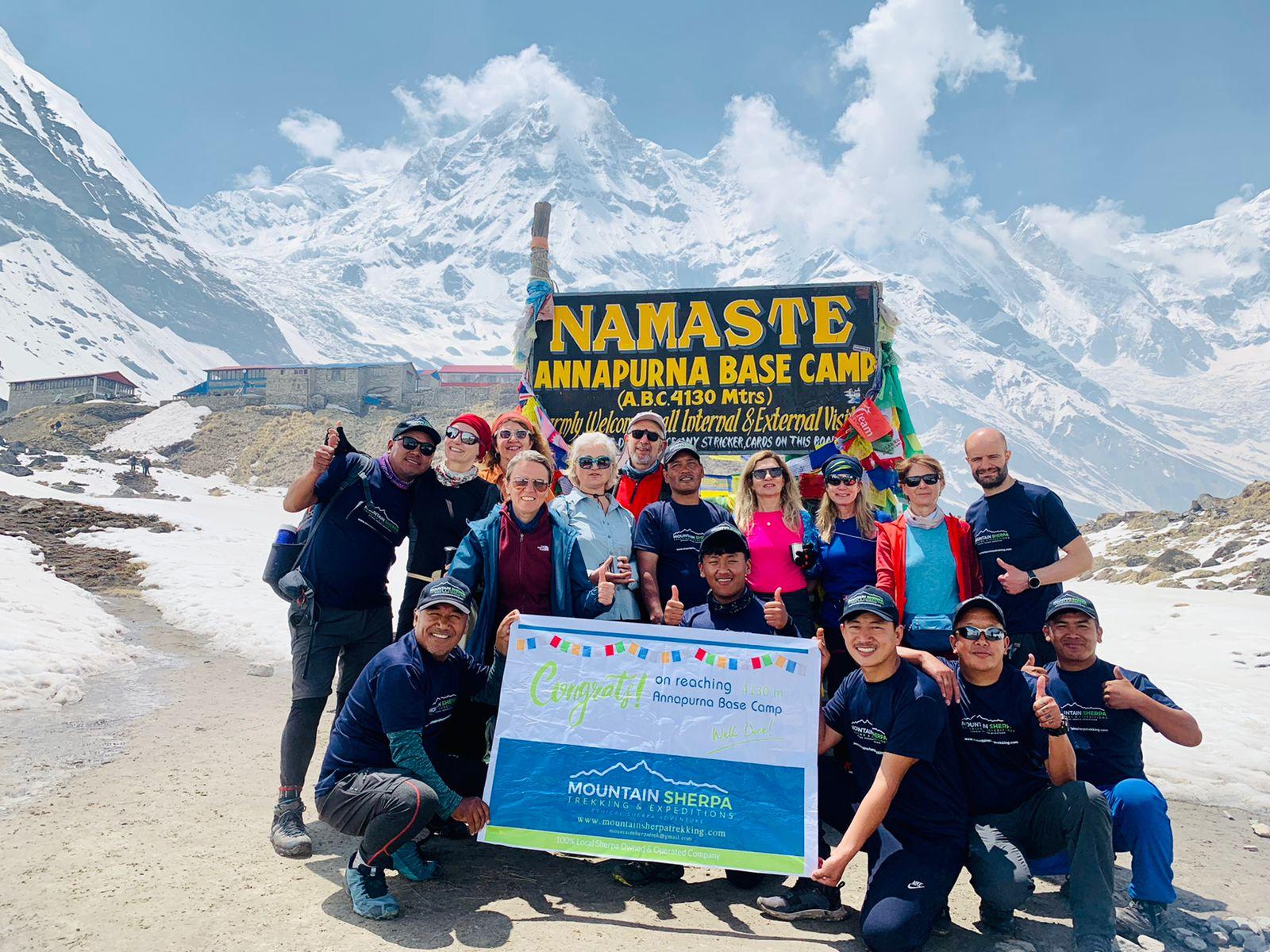-
Pasang Sherpa (Managing Director)
+977-9851060947
Since 1998 15,000+ Happy Guests Sherpa Owned & Operated Company

Discover 15 essential things to know before trekking to Annapurna Base Camp. Learn about safety, preparation, and choosing the perfect trek for a safe holiday.
Trekking to Annapurna Base Camp is a life-changing adventure that requires thoughtful preparation. Understanding the altitude and acclimatization process is crucial to staying safe. Packing lightweight yet essential gear, including warm clothing, sturdy boots, and trekking poles, ensures comfort along the trail. Staying hydrated and eating nutritious meals are vital for maintaining energy levels during the trek. Choosing experienced Sherpa guides enhances the journey with expert navigation and cultural insights. It's important to plan your trek during the best seasons, typically spring or autumn, for clear skies and pleasant weather. Lastly, having comprehensive travel insurance that covers high-altitude trekking ensures peace of mind throughout your adventure.
Annapurna Base Camp Trek: Choose Your Perfect Route for an Unforgettable Adventure
Embark on the ultimate Annapurna Base Camp adventure with our expertly crafted trekking routes. Our Annapurna Sanctuary Trek via Poonhill combines stunning Himalayan vistas, vibrant rhododendron forests, and authentic Gurung villages for the perfect mix of adventure and culture. From the iconic Poonhill viewpoint, capture awe-inspiring panoramas and unforgettable moments.
If you have shorter holiday time then you can join our direct Annapurna Base Camp Trek offers a streamlined itinerary, delivering the same breathtaking beauty of the Annapurna region in a shorter timeframe. For those seeking luxury, our Luxury ABC Trek caters to honeymooners, families, and travelers looking for an indulgent experience, with premium accommodations and unparalleled comfort in the heart of the Himalayas.
Let us handle every detail so you can focus on creating memories. Trust our Sherpa expertise for a seamless, safe, and extraordinary trekking experience. Book now and make your dream adventure a reality!
15 Essential Tips for Your Annapurna Base Camp Trek
Choosing the right trekking company ensures value and quality. Many low-cost options often skip essentials like city tours, quality accommodations, and domestic flights. At Mountain Sherpa Trekking, our all-inclusive packages cover airport transfers, city tours, premium lodges, hot showers, expert Sherpa guides, trekking gear, and all meals. With over 27 years of experience, we deliver safe, personalized, and unforgettable adventures. Trust us for a hassle-free ABC trek that’s worth every penny!

Choose Mountain Sherpa Trekking for an unforgettable and expertly guided Annapurna Base Camp adventure!
Contact Us
At Mountain Sherpa Trekking, we're dedicated to making your Annapurna Base Camp trekking journey seamless and stress-free. Have questions? Feel free to email us or reach out via WhatsApp for quick responses and exceptional support. We're here to help you every step of the way—let's start planning your adventure today!
Follow Us:
Facebook | Instagram | X

E-mail: info@mountainsherpatrekking.com
![]()
Write us to on WhatsApp: +977-9849643731